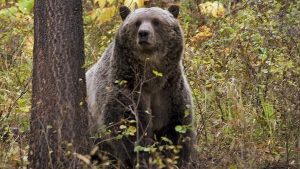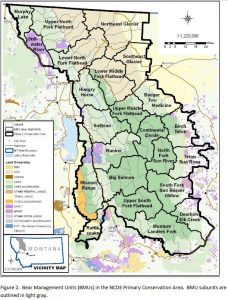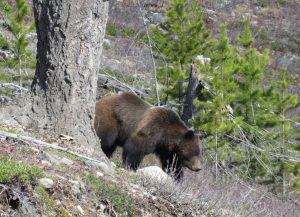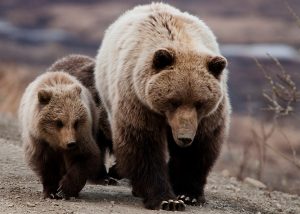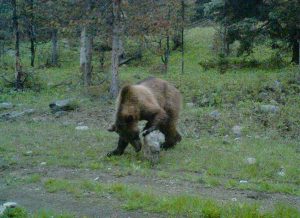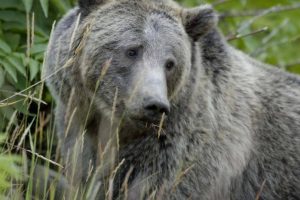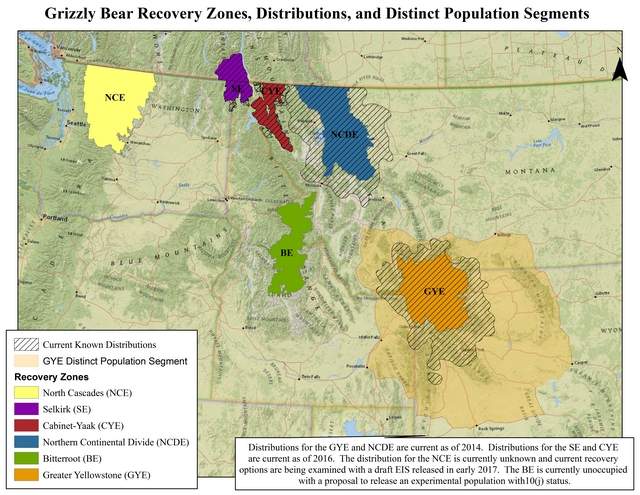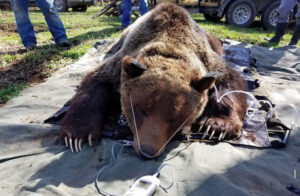
Timely article concerning Flathead area bear conflict management problems . . .
Privately-run campgrounds are adding another complication for wildlife managers trying to reduce human conflicts with grizzly bears, experts said this week.
On Thursday, the Northern Continental Divide Ecosystem subcommittee met in Kalispell to review last year’s management of NCDE grizzly bears and discuss future challenges as more people with little wildlife awareness move to western Montana. Another 50 members of the committee and the public joined the meeting online.
Montana Fish, Wildlife & Parks grizzly research biologist Cecily Costello summarized the 2021 data that showed the NCDE population is stable based upon the 2017 Conservation Strategy criteria. However, 44 bears, including 11 cubs, died within the primary conservation area and the surrounding Zone 1 buffer area – stretching from Eureka south to the Ninemile Valley, east over Rogers Pass and north through the Blackfeet Reservation.

